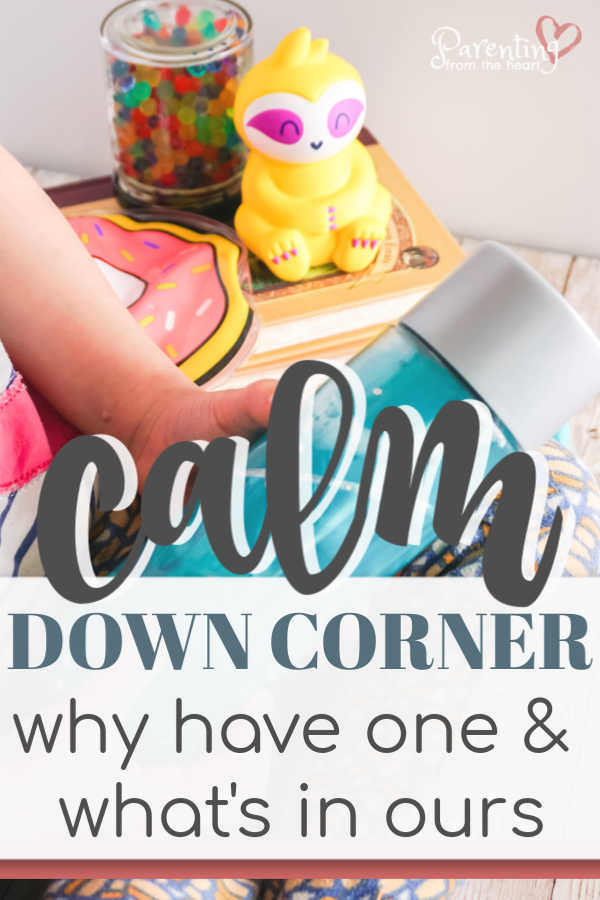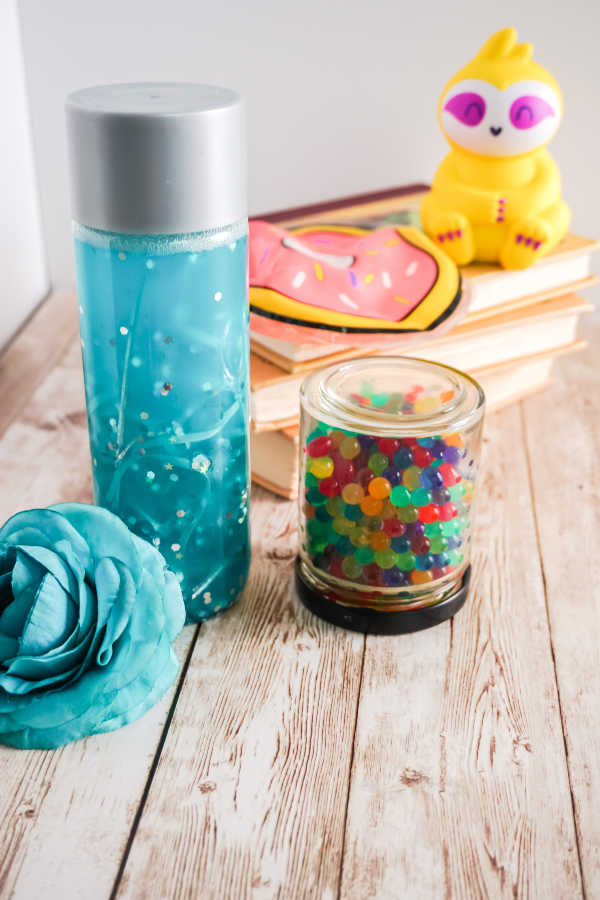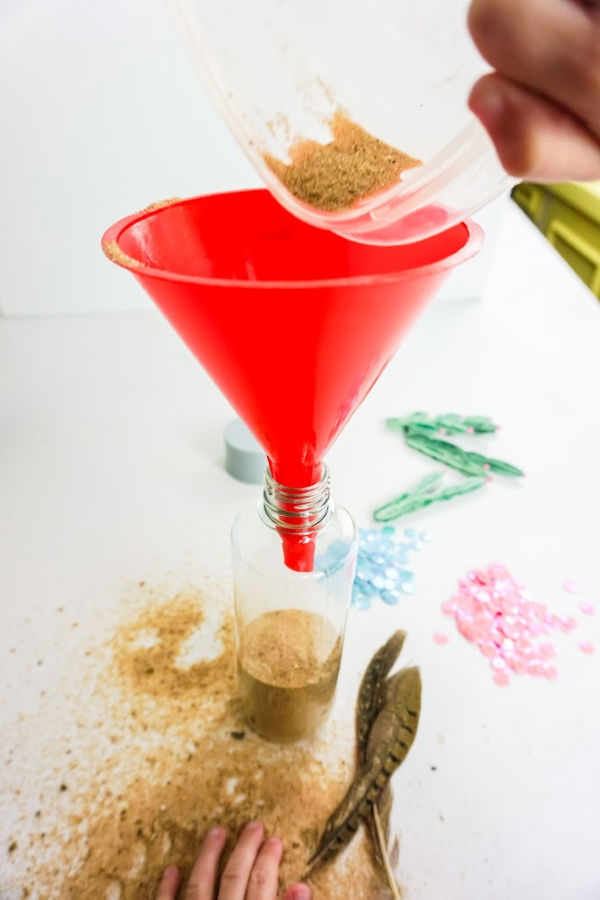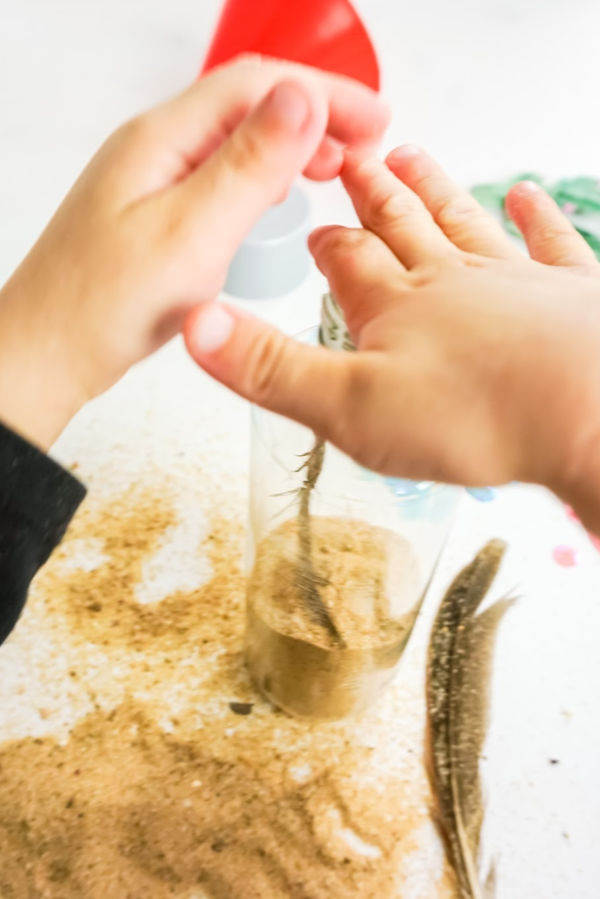What is a calm down corner? How does it compare to a timeout chair? Find out the difference plus what’s in ours!
What is a calm down corner? How does it compare to a timeout chair? Find out the difference plus what’s in ours!
I’m in the thick of it as far as parenting toddlers goes. My daughter is just shy of three-and-a-half; my son had his second birthday in June.
Our days are a mess of process art, sensory play, and playground adventures and, at times, blood-curdling screams.
Being so close in age means they get in each other’s space far too often. And, when that happens, someone invariably cries.
My first focus is to redirect their negative behaviour. Meaning, I find ways to replace misbehaviour with constructive behaviour.
Related reading: Front-loading, redirection and connect: 3 strategies for parenting a strong-willed toddler
When my daughter started being more vocal and willful, I set up a calm down corner. Simply, it was a blanket laid down between her and her brother’s cribs with all of their stuffed animals and suggested that she go there if she was verging on a temper tantrum.
What I find so incredibly funny about having kids is how quickly you forget. The calm down corner served its purpose for a while in our family, my daughter seemed to need it less and poof! It was forgotten.
My son is struggling with self-regulation. Sibling rivalry seems to be at an all-time high in our household. Also, my two-year-old has had a few tantrums and my daughter’s will is definitely proving to be strong. So, I knew it was time to set up a new and improved one in our new home.

A calm down corner is a kinder alternative to a timeout chair. The purpose is for an upset or angry child to have a place where he or she can get release and regain composure. Unlike a timeout chair, this form of non-exclusionary timeout has mediums to promote emotional regulation.
Traditionally, children are sent to a timeout chair for a pre-determined period of time and then they can return to the main interaction. In contrast, the goals of the calm down corner are to:
Related reading: Time-Ins vs. Timeouts: What does the research actually say?
I find this to be especially beneficial when they are really overwhelmed or are not willing to go on their own. In our household, my three-year-old will go independently the majority of the time.
My two-year-old relies on my help to spend time calming down. We have sensory jars, balloons filled with flour, and books. You could argue that bad behaviour or a very upset toddler could be read to or hugged or talked to without a calm down corner.
What I find is that our set-up cues my kids that they need a reset and prompt greater receptivity to discipline. When sitting with my kids, whether I sit in the calm down corner with them or go when they say they’re ready to leave, we talk about their feelings, the words that would have been better for them to use, and what they can do next time. Overall, we have found it to be a very effective strategy. The key is being consistent, empathetic, and clear about expectations.
Related reading: Stop Yelling at Your Kids with This Simple Strategy
Here are two easy DIY items in our calm down corner that also make for fun activities to do with young kids.


I let the kids empty their glue and put the items we had pre-selected into their respective jars. Then, I filled it with warm water to the top. We used warm water to help the glitter glue dissolve a bit. Then, I glue gunned the lids shut.

I let the kids use a measuring cup to dump the flour into the funnel. Once we had filled their balloons, I tied them.
Adding some books and stuffed animals can be nice additions to your calm down corner too. I hope you find as much value in having a calm down corner as we have!
Sensory bottles, stress balls, books, and stuffed animals are nice additions to any calm down area. Calm down corners can be a great way for young kids to take a timeout in a way that focuses on emotional regulation.
How to execute positive parenting from a position of strength
Time in vs. Timeout: What does the research say?
Calm your angry child: Positive parenting strategies that work!
Front-loading, Redirection and Connection: 3 powerful strategies for your strong-willed toddler
10+ Positive Parenting Strategies for Difficult Toddler Behaviour
Ask any parent who has watched a two‑year‑old “fail” to hear the call to put on shoes—only to…
Toddlers can be confusing, to say the least. One moment they’re clinging to your leg like a baby…
Affection wasn’t really a thing in my childhood home. My parents were good providers, but hugs, “I love…